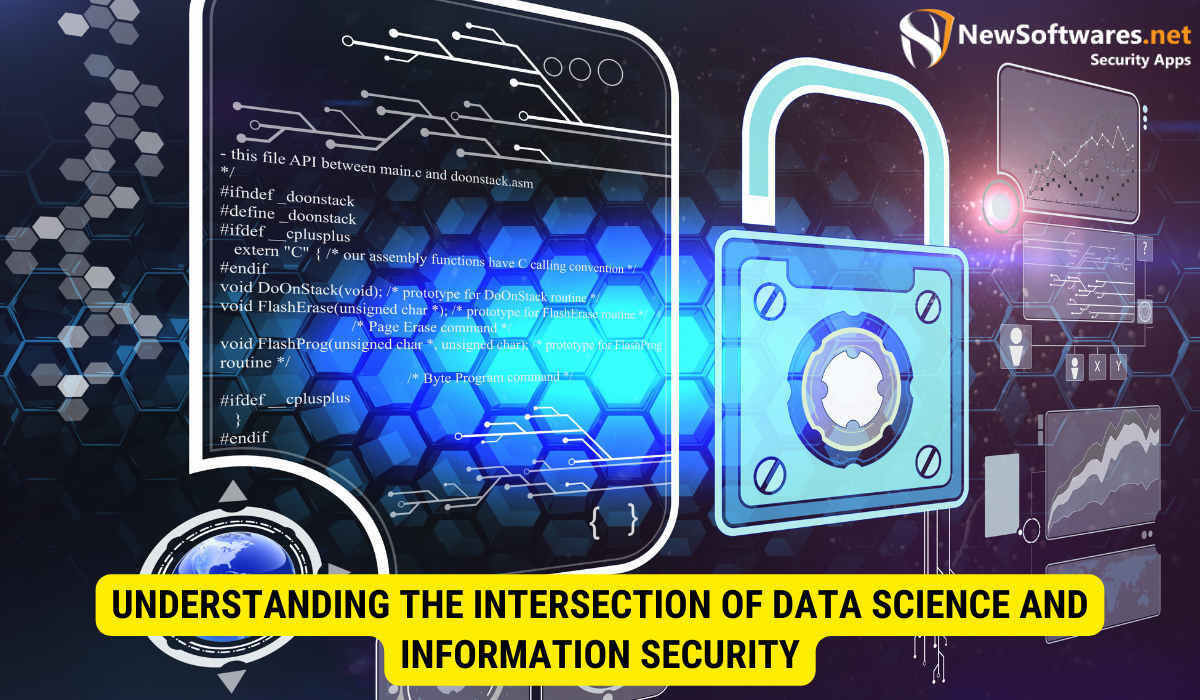Combining data science and information security involves using data science techniques for threat detection and predictive analytics, while ensuring information security principles are integrated into data workflows. This includes implementing AI-powered threat detection systems, ensuring data integrity, and maintaining data privacy through privacy-preserving techniques like differential privacy. It’s crucial to have professionals skilled in both fields and to establish clear communication and collaboration between data scientists and information security teams. This integration allows businesses to harness data-driven insights securely, ensuring both innovative analytics and robust data protection.
Data science and information security are two fields that are becoming increasingly intertwined in today’s digital age. As businesses rely more and more on data-driven insights to make critical decisions, there is a growing need for robust information security measures to protect this valuable information. I will explore the intersection of data science and information security, highlighting their importance individually and discussing how they can be seamlessly combined to enhance overall business strategies.
Understanding the Intersection of Data Science and Information Security

Before delving deeper into the integration of data science and information security, it is essential to grasp the individual roles and significance of both fields.
Data science and information security are two distinct disciplines that are increasingly intersecting in today’s digital landscape. While data science focuses on extracting knowledge and insights from data, information security is concerned with protecting that data from unauthorized access and ensuring its integrity. Together, these fields play a crucial role in driving evidence-based decision-making, optimizing processes, and safeguarding sensitive information.
Defining Data Science and Its Role in Businesses
Data science is the interdisciplinary study of scientific methods, processes, algorithms, and systems to extract knowledge and insights from structured and unstructured data. It involves collecting, analyzing, and interpreting vast amounts of data to uncover patterns, trends, and meaningful insights.
In businesses, data science plays a crucial role in driving evidence-based decision-making and optimizing processes. By leveraging advanced tools and techniques, businesses can gain a competitive edge by discovering hidden patterns, predicting future outcomes, and optimizing their operations.
For example, in the retail industry, data science can be used to analyze customer purchasing patterns and preferences, enabling businesses to personalize marketing campaigns and improve customer satisfaction. In the healthcare sector, data science can help identify disease trends, predict patient outcomes, and optimize treatment plans.
The Importance of Information Security in the Digital Age
As businesses increasingly rely on data, ensuring its security has become of paramount importance in the digital age. Information security encompasses the processes, methodologies, and technologies designed to protect information from unauthorized access, use, disclosure, disruption, modification, or destruction.
A breach in information security can have severe consequences, including financial losses, damage to reputation, and legal implications. With cyber threats becoming more sophisticated, businesses need robust information security strategies to safeguard sensitive data and maintain customer trust.
Information security professionals employ various measures to protect data, such as encryption, access controls, firewalls, and intrusion detection systems. They continuously monitor and assess potential vulnerabilities, respond to security incidents, and implement security best practices to mitigate risks.
Moreover, information security is not limited to businesses alone. Governments, healthcare organizations, financial institutions, and individuals all have a vested interest in protecting their data. In an interconnected world, where data is constantly being shared and transmitted, information security is a collective responsibility.
As the fields of data science and information security continue to evolve, their intersection becomes increasingly important. Data scientists need to be aware of the security implications of their work and ensure that data privacy and protection measures are in place. Similarly, information security professionals can leverage data science techniques to detect anomalies, identify potential threats, and enhance their security strategies.
In conclusion, the integration of data science and information security is crucial in today’s digital landscape. By combining the power of data analysis with robust security measures, businesses and organizations can unlock the full potential of their data while safeguarding it from unauthorized access and potential threats.
The Synergy of Data Science and Information Security
The combination of data science and information security creates a powerful synergy that enhances the effectiveness of both fields and contributes to overall business success.
How Data Science Enhances Information Security
Data science techniques and tools can be utilized to strengthen information security measures by identifying potential vulnerabilities, detecting anomalous behavior, and predicting and mitigating threats. Machine learning algorithms, for example, can analyze vast amounts of data in real-time to identify patterns indicative of cyberattacks or abnormal user behavior.
Furthermore, data science can play a crucial role in incident response and forensic investigations. By analyzing network logs, system logs, and other relevant data, data scientists can reconstruct the sequence of events leading up to a security incident, identify the root cause, and develop strategies to prevent similar incidents in the future.
Moreover, data science can assist in the development of robust authentication and access control systems. By analyzing user behavior and contextual information, data scientists can create models that accurately distinguish between legitimate users and potential attackers, strengthening the overall security posture of an organization.
The Role of Information Security in Data Science
Conversely, information security lays the foundation for reliable and trustworthy data that forms the basis of data science. Information security ensures data integrity, confidentiality, and availability, which are essential for accurate analysis and meaningful insights.
Effective information security measures, such as access controls, encryption, and secure data storage, provide data scientists with a reliable and secure environment to work with sensitive data. This allows them to focus on analyzing the data rather than worrying about its security.
Additionally, information security plays a critical role in ensuring compliance with data protection regulations. By implementing appropriate security controls and privacy measures, organizations can ensure that their data science initiatives are conducted in a lawful and ethical manner.
Furthermore, information security professionals can contribute to the data science process by providing expertise in data anonymization and de-identification techniques. This helps to protect the privacy of individuals whose data is being analyzed, ensuring compliance with privacy regulations and fostering trust between organizations and their customers.
In conclusion, the synergy between data science and information security is a symbiotic relationship that strengthens both fields. By leveraging data science techniques, information security measures can be enhanced, leading to improved threat detection and response capabilities. Conversely, information security provides the necessary foundation for reliable and secure data analysis, enabling data scientists to extract meaningful insights without compromising data integrity or privacy. This collaboration between data science and information security is crucial in today’s digital landscape, where organizations face increasingly sophisticated cyber threats and must make data-driven decisions to stay ahead of the competition.
Key Strategies for Integrating Data Science and Information Security
Integrating data science and information security requires a holistic and unified approach. Here are some key strategies to consider:
Developing a Unified Approach
- Establish clear communication channels between data scientists and information security professionals to foster collaboration and ensure alignment.
- Implement a robust data governance framework that outlines guidelines for data collection, usage, sharing, and security.
- Ensure data privacy and compliance with relevant regulations, such as the General Data Protection Regulation (GDPR) or the Health Insurance Portability and Accountability Act (HIPAA).
Addressing Challenges in Integration
- Ensure data quality and accuracy by implementing rigorous data cleansing and validation procedures.
- Implement robust access controls and authentication mechanisms to prevent unauthorized access to sensitive data.
- Regularly monitor and analyze network traffic and system logs to detect potential security breaches or anomalous activities.
The Future of Data Science and Information Security Integration

The integration of data science and information security is an ongoing process, and it is expected to evolve further in the future. Here are some emerging trends and predictions:
Emerging Trends in Data Science and Information Security
Advances in artificial intelligence and machine learning will continue to shape the integration of data science and information security. Automated threat detection and response systems, powered by AI algorithms, will become more prevalent, enabling organizations to detect and mitigate threats in real-time.
Privacy-preserving techniques, such as differential privacy and federated learning, will gain prominence as organizations seek to balance data sharing for analysis with protecting individuals’ privacy rights.
Predictions for Future Integration Strategies
Integration strategies will increasingly focus on embedding security measures directly into data science workflows and processes, ensuring security is an intrinsic part of data-driven decision-making.
The role of data scientists will evolve to incorporate a deeper understanding of information security principles and best practices, enabling them to design and develop secure data science solutions.
Key Takeaways
- Data science and information security are integral to a successful business strategy in the digital age.
- Data science enhances information security by proactively detecting and mitigating threats.
- Information security provides the foundation for reliable and trustworthy data that drives data science.
- Integration strategies should include clear communication, robust data governance, and adherence to privacy regulations.
- The future of integration involves advances in AI, privacy-preserving techniques, and embedding security into data science processes.
Frequently Asked Questions
Q: Can data science techniques be used to detect insider threats?
A: Yes, data science techniques can analyze patterns of behaviors and identify anomalies indicative of potential insider threats. By monitoring user behavior and detecting deviations, organizations can proactively respond to insider threats and mitigate risks.
Q: How can businesses balance data sharing for analysis while maintaining privacy?
A: Privacy-preserving techniques, such as differential privacy and federated learning, allow organizations to analyze data without compromising individuals’ privacy. These techniques anonymize data or distribute the analysis process across multiple parties, preserving privacy while still gaining insights.
Q: What skills are essential for professionals working at the intersection of data science and information security?
A: Professionals in this field should have a strong foundation in data science, including proficiency in programming languages (such as Python or R), statistical analysis, and machine learning. Additionally, a solid understanding of information security principles, network security, and data privacy regulations is essential.
Q: How can businesses ensure data security across different stages of the data science lifecycle?
A: Businesses should implement a comprehensive security framework that addresses data security at every stage, including data acquisition, storage, and analysis. Robust access controls, encryption, and regular security audits should be implemented to protect data from unauthorized access.
Q: What are the potential risks of integrating data science and information security?
A: One of the main risks is ensuring that data scientists have the necessary security knowledge and expertise to handle and protect sensitive data. Additionally, integrating data science and information security requires clear communication and collaboration between different teams, which may present operational challenges.
Conclusion
Seamlessly combining data science and information security is crucial for businesses to thrive in today’s data-driven world. By integrating these two fields, organizations can leverage advanced analytics to gain insights from massive datasets while ensuring the protection of sensitive information. The key lies in establishing a unified approach, addressing challenges in integration, and staying updated on emerging trends. By doing so, businesses can confidently navigate the evolving landscape and harness the power of data science and information security to gain a competitive edge.
